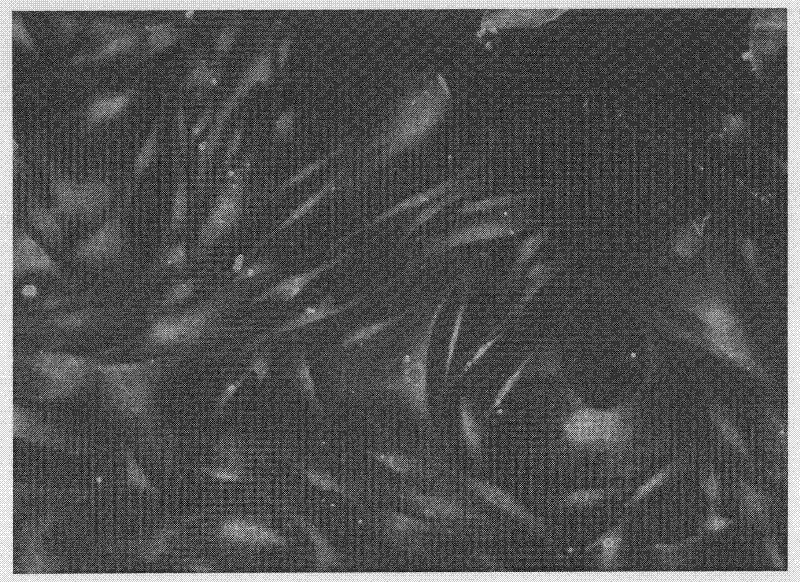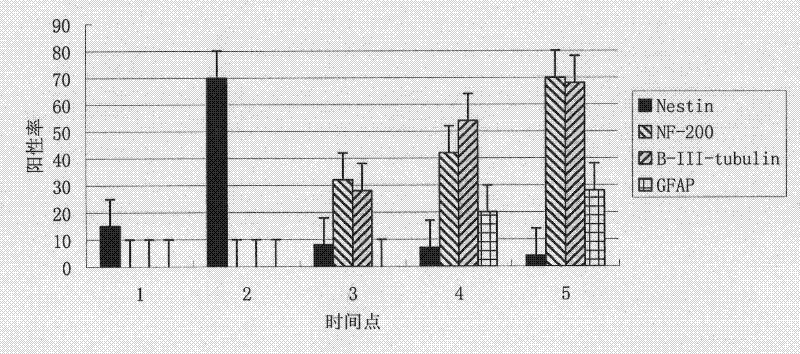Method for inducing differentiation from human umbilical cord mesenchymai stem cells (hucMSCs) into neural cells
A technology of stem cells and nerve cells, applied in the field of cell biology
- Summary
- Abstract
- Description
- Claims
- Application Information
AI Technical Summary
Problems solved by technology
Method used
Image
Examples
Embodiment Construction
[0026] Experimental steps:
[0027] 1. Materials and methods
[0028] The umbilical cords were obtained from full-term caesarean section infants in the Department of Obstetrics and Gynecology, Shanghai First People's Hospital, with the authorization and consent of their parents.
[0029] 2. Main reagents and factors
[0030] Ten 2-week-old C57BL / 6 mice (Shanghai Experimental Animal Breeding Center, Chinese Academy of Sciences), DMEM medium (Gibco, USA), complex collagenase NB4 (Serva, Germany), fetal bovine serum (FBS: Hyclone, Australia), phosphoric acid Salt buffer (PBS, PH7.2), Schwann cell culture medium (SCCM, Schwann cells culture medium containing 10ngheregulin-β-1, 2uM forsklin, 10% FBS, 100u / ml penicillin, 100u / ml streptomycin and high sugar DMEM). Rabbit anti-human NF-200, B-tubulin III, GFAP, Nestin (Milipore, USA) flow cytometry antibodies were purchased from (BD, USA).
[0031] 3. Isolation of umbilical cord mesenchymal cells
[0032] Remove the umbilical cor...
PUM
| Property | Measurement | Unit |
|---|---|---|
| length | aaaaa | aaaaa |
Abstract
Description
Claims
Application Information
 Login to View More
Login to View More - R&D
- Intellectual Property
- Life Sciences
- Materials
- Tech Scout
- Unparalleled Data Quality
- Higher Quality Content
- 60% Fewer Hallucinations
Browse by: Latest US Patents, China's latest patents, Technical Efficacy Thesaurus, Application Domain, Technology Topic, Popular Technical Reports.
© 2025 PatSnap. All rights reserved.Legal|Privacy policy|Modern Slavery Act Transparency Statement|Sitemap|About US| Contact US: help@patsnap.com



